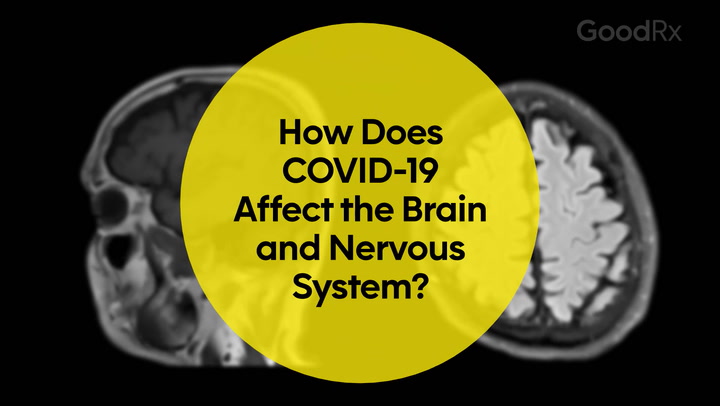
What PTSD Flashbacks Feel Like, and How You Can Cope With an Episode
Key takeaways:
In a PTSD flashback, you may feel like you’re reliving a past traumatic incident as if it’s happening right now.
PTSD flashbacks can be triggered by anything that reminds you of past trauma you have experienced.
Self-care techniques can help you cope with flashbacks, and you may also need professional support.

Post-traumatic stress disorder (PTSD) is a mental health condition that can sometimes develop after a traumatic experience. It can be caused by many different things, such as serious accidents, sexual violence, and military combat. It’s a common condition — affecting about 6 out of every 100 people in the U.S. at some point in their lives.
PTSD can cause many different symptoms. Some PTSD symptoms can be ongoing, like having trouble sleeping, avoiding certain situations, or feeling badly about yourself. But PTSD can cause upsetting episodes, too, like:
Flashbacks
Nightmares
Sudden, unwanted memories or thoughts
Angry or aggressive outbursts
Let’s take a closer look at flashbacks — one of the most well-known symptoms of PTSD.
What is a PTSD flashback?
A PTSD flashback is when you vividly re-experience a past traumatic incident. In other words, you feel like you’re actually reliving the experience.
Flashbacks can happen suddenly and unexpectedly, and make you feel scared, anxious, or sad. While not everyone diagnosed with PTSD experiences flashbacks, they are a common symptom.
What does a flashback feel like?
During a flashback, you may feel like you're living through the trauma again. Flashbacks are more than a memory — they can also involve the emotional and physical sensations you felt during a traumatic event. For example, if you were sexually abused, you might feel as though your abuser is physically there with you. Or, if you’re a combat veteran, you might have flashbacks from war.
During a flashback, you may:
See complete or partial images of the traumatic incident
Hear sounds or words associated with the event
Experience physical sensations, such as pain or like you’re being touched
Undergo the same emotions or body reactions, such as sweating or a racing heartbeat
Feel confused about what’s happening during the flashback
Some people experience PTSD flashbacks as a type of dissociation. Dissociation is when you feel disconnected from your thoughts, emotions, memory, or identity. You might feel like you’re in a movie or have no recognition of where you actually are.
Keep in mind not every flashback involves reliving the traumatic event from beginning to end. You may re-experience just some aspects of the event. Or, you may only experience emotions or body sensations. A PTSD flashback can last for a few seconds or go on for several hours.
What can trigger a PTSD flashback?
PTSD flashbacks can happen for no reason. But, they can also be triggered by people or situations that remind you of your trauma. You may or may not realize a situation is a PTSD trigger.
Examples of triggers that may lead to a PTSD flashback include:
Seeing someone who reminds you of the trauma
Driving or walking past the place where the traumatic event happened
Watching a TV show that brings back memories of the event
Having a conversation that brings up memories of the incident
Reading certain types of books or listening to certain types of music
For example, a news report of a natural disaster may trigger a flashback of when you experienced a tornado or severe storm. Or the anniversary of an event may trigger unwanted memories.
Flashback triggers are different for everyone. It’s important to try to understand your triggers so you can better cope with them. But keep in mind that you might not be able to identify what causes your flashbacks — and that’s OK, too.
How to deal with PTSD flashbacks
Flashbacks can feel terrifying and disorienting. When you can, use coping skills to manage your distress during or after a flashback.
Here are some self-care tips that may help:
Talk to yourself. Remind yourself that you’re having a flashback — and that the traumatic event isn’t actually happening right now — no matter how awful it might feel. Tell yourself that you’re safe.
Practice mindfulness. Mindfulness can help you come back to the present moment. This could mean taking deep, slow breaths, or tuning in to the sensation of your feet on the ground. You can also touch or smell an item that has a calming or strong scent, such as a piece of scented fabric.
Ground yourself. Use your five senses to ground yourself, which can help you step out of the past and into the here and now. Open your eyes and look around you. Name the things you can see, hear, smell, or feel.
After the flashback, make a note (such as in a journal) of what happened during the episode and what might have triggered it. This may give you a better understanding of your flashbacks.
What should you do if someone is having a PTSD episode?
It can be hard to see a friend or family member having a PTSD flashback. But you can help. Here are some things that you can do:
Stay calm. Try to not panic or make any sudden movements. Remember that the flashback will pass.
Use your voice to help them tune into the present. Tell them clearly who they are, where they are, and who is with them. Remind them that they’re safe and nothing bad is happening.
Help them connect to their surroundings. Ask them to open their eyes and look around the room. Have them name things they can see, smell, or touch.
Ask them to take deep, slow breaths. If you can, try to coach them through a breathing exercise.
Respect their personal space, as touch can be triggering for some people. Wait to make physical contact until they’ve recovered enough to give you permission.
Continue to reassure them that they’re safe. It’s OK to repeat yourself.
How to prevent PTSD flashbacks
Sometimes, especially if you understand what leads to flashbacks, you may be able to prevent some of them. The following strategies might help:
Be aware of your triggers. Triggers might include places, situations, people, and things that are likely to remind you of the traumatic event.
Pay attention to warning signs. Your flashbacks may seem random, as though nothing motivated them. But in many cases, there are warning signs, such as a change in mood or sweating all of a sudden.
Talk with someone you trust. You might feel hesitant to talk about your past traumatic experiences and the flashbacks you’re having. Keep in mind that you can confide in others without rehashing all the details of your traumatic event. You can simply say how you’re feeling. Consider talking to a friend, family member, healthcare professional, helpline listener, or support group member.
Take time for self-care. This can include physical activity, nutritious eating, and connections with others.
Where to get professional help for flashbacks
Self-care techniques for flashbacks can be useful, but they might not be enough. You may need to get professional help. Speak with your primary care provider about your flashbacks. They can refer you to the appropriate specialist — such as a psychiatrist or psychotherapist — to help you get the best treatment.
Another option is to contact the SAMHSA’s National Helpline at 1-800-662-HELP (4357). The helpline from the Substance Abuse and Mental Health Services Administration can provide referrals to support groups, local treatment centers, and community organizations.
Free and low-cost PTSD treatments are available — whether or not you have insurance. If you’re a member of the military or a veteran experiencing PTSD flashbacks, you can also contact the U.S. Department of Veterans Affairs for assistance.
The bottom line
Flashbacks are a common symptom of PTSD. They can make you feel as though you’re going through the trauma, or some aspects of it, all over again. Flashbacks are often triggered by anything that reminds you of the traumatic event.
There are ways to cope with flashbacks and potentially prevent them, including through self-care techniques. If you can’t manage your flashbacks on your own, consider speaking to a healthcare professional for additional support.
Why trust our experts?



References
Brewin, C. R. (2015). Re-experiencing traumatic events in PTSD: New avenues in research on intrusive memories and flashbacks. European Journal of Psychotraumatology.
Ehlers, A., et al. (2004). Intrusive re-experiencing in post-traumatic stress disorder: Phenomenology, theory, and therapy. Memory.
Mind. (n.d.). Trauma.
National Center for PTSD. (2023). Understanding PTSD and PTSD treatment.
National Institute of Mental Health. (2020). Post-traumatic stress disorder. National Institutes of Health.
RAINN. (n.d.). Flashbacks.
Schiavone, F. L., et al. (2018). The dissociative subtype of PTSD: An update of the literature. PTSD Research Quarterly.
U.S. Department of Veterans Affairs. (n.d.). Coping with traumatic stress reactions.
U.S. Department of Veterans Affairs. (2022). PTSD treatment.
For additional resources or to connect with mental health services in your area, call SAMHSA’s National Helpline at 1-800-662-4357. For immediate assistance, call the National Suicide Prevention Lifeline at 988, or text HOME to 741-741 to reach the Crisis Text Line.

























